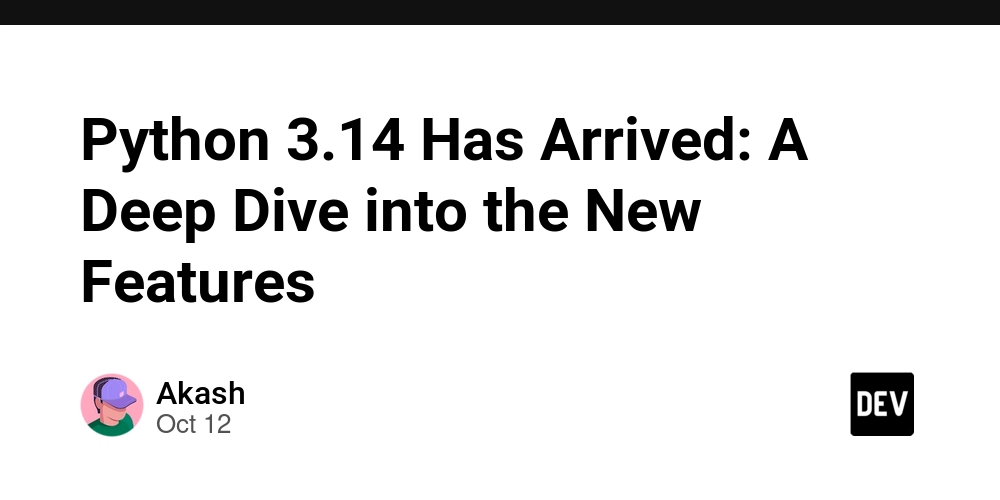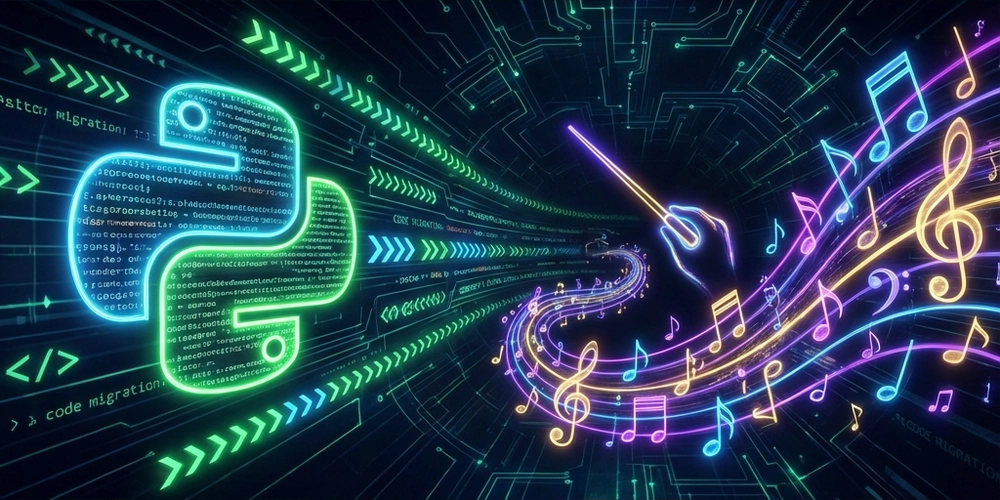The much-anticipated Python 3.14 was officially released on October 7, 2025, marking the latest evolution of the world’s most popular programming language. This release brings a host of new features, performance enhancements, and quality-of-life improvements for developers. Following a structured 17-month development cycle, Python 3.14 delivers on its promise of a more performant and developer-friendly experience.
This article will take you on a comprehensive tour of the most significant changes in Python 3.14, exploring what they mean for you and your code.
A More Interactive and Colorful REPL
One of the first things you’ll notice in Python 3.14 is the upgraded interactive Read-Eval-Print Loop (REPL). Building on the modern PyREPL introduced in Python 3.13, this new version offers an even richer experience with features like multiline editing, improved tab completion, and smarter history browsing. These enhancements aim to provide a more polished and intuitive command-line experience, rivaling popular alternative shells like IPython and bpython.
As a nod to the version number’s mathematical significance, you can now launch the Python 3.14 REPL with the 𝜋thon command.
Deferred Evaluation of Annotations is Now the Default
In a significant change for type hinting, Python 3.14 now enables deferred evaluation of annotations by default, as specified in PEP 649. This means that type annotations are no longer eagerly evaluated at the time a function or class is defined. Instead, they are stored as strings and evaluated only when needed by tools like type checkers.
This change, which was previously available via from __future__ import annotations, simplifies the process of writing type hints, particularly when dealing with forward references or circular dependencies. While the from __future__ import annotations directive is now considered deprecated, it will continue to function as before.
Language and Standard Library Enhancements
Python 3.14 introduces several noteworthy changes to the language and its standard library:
-
Multiple Interpreters in the Standard Library (PEP 734): This exciting development allows for the creation of multiple Python interpreters within a single process. This can lead to better concurrency and parallelism in certain applications by enabling true parallel execution of Python code without the limitations of the Global Interpreter Lock (GIL).
-
Safer Live Process Debugging (PEP 768): A new, stable interface has been standardized for connecting external debuggers to the CPython interpreter. This makes debugging live processes safer and more reliable, as debuggers no longer need to rely on fragile internal implementation details of CPython. The
pdbmodule can now attach to a running Python process using its process ID (PID) with the-poption. -
Template Strings (t-strings): This new feature provides a way for controlled string interpolation, offering a safer alternative to f-strings in certain contexts where preventing arbitrary code execution is crucial.
Performance Boosts: An Experimental JIT Compiler and a New Interpreter
Python 3.14 continues the trend of focusing on performance improvements. This release introduces two significant experimental features aimed at making Python code run faster:
-
Experimental JIT Compiler: The official binary releases for Windows and macOS now include an experimental Just-In-Time (JIT) compiler. A JIT compiler can translate Python bytecode into machine code at runtime, leading to significant speedups for long-running, CPU-bound tasks.
-
A New Interpreter: For users of newer compilers like Clang 19, an opt-in interpreter is available that promises a 3-5% performance improvement on the standard pyperformance benchmark suite. This new interpreter is currently compatible with Clang 19 and newer on x86-64 and AArch64 architectures, with support for GCC expected in a future release.
Free-Threaded Python and Build Changes
Another major development in Python 3.14 is the official support for free-threaded Python (PEP 779). This allows for the GIL to be disabled, enabling true multithreading for Python code.
In terms of build and release changes, Python 3.14 discontinues the use of PGP signatures for release artifacts in favor of Sigstore (PEP 761). Additionally, official Android binary releases are now available, expanding the reach of Python to this popular mobile platform.
Installation and Availability
Python 3.14.0 is now available for download. For Windows users, a new install manager is being introduced, which can be installed from the Windows Store. The traditional installer will remain available for the 3.14 and 3.15 releases.
The Road Ahead
Python 3.14 is a feature-packed release that offers something for every developer. The enhanced REPL and deferred annotation evaluation improve the day-to-day coding experience, while the experimental JIT compiler and support for multiple interpreters pave the way for more performant and concurrent Python applications.
As with any new release, it’s recommended to start by trying it out in a test environment to explore the new features and assess their impact on your projects. The detailed documentation and release notes are an invaluable resource for a deeper understanding of all the changes.
The Python development team continues to push the boundaries of the language, and the release of 3.14 is a testament to their commitment to innovation and improvement. It’s an exciting time to be a Python developer, and the future of the language looks brighter than ever.



